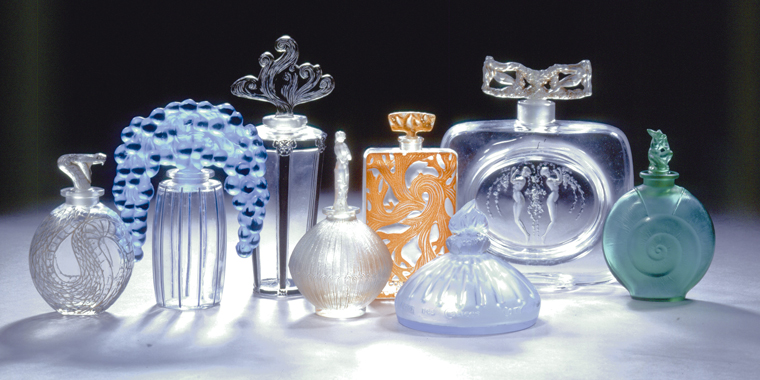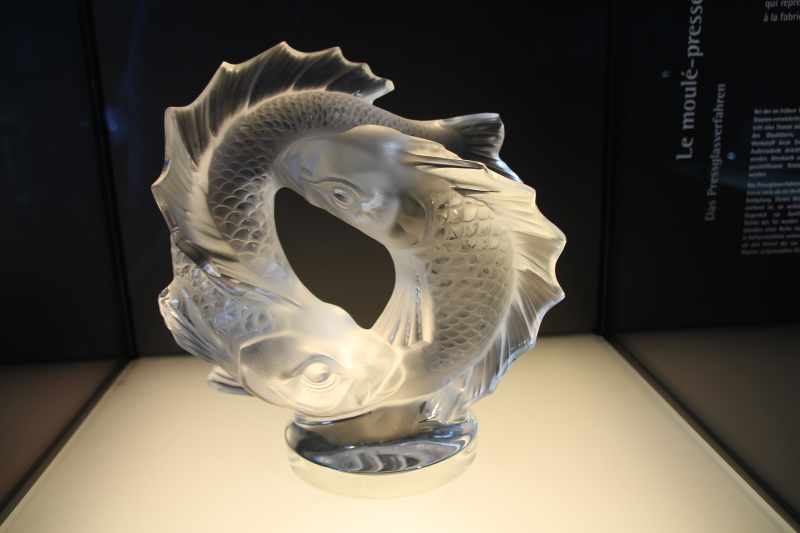Cruising through Alsace aboard hotel barge Panache, you’re probably looking forward to the sights and sensations that make this region which straddles the French-German border, so enchanting. Mountains rearing up on the horizon, sloping vineyards, steeply pitched gabled roofs with timber framing, crisp white wines and golden beers: the blending of French and German cultures. And, not least of all the beautiful glass from the area, in particular that of René Lalique!
As with any journey, you should also prepare for the unexpected, to be surprised and captivated. When you enter the world of René Lalique at the eponymous Musée Lalique in Wingen-sur-Moder, France, you’ll know exactly what we mean. The visit to the museum, part of Panache’s cruise itinerary through Alsace, will perhaps make you see the region in a whole new light.
Who was René Lalique?
René Jules Lalique was born in 1860 in north-eastern France and took to the visual arts from a very early age. From drawing and sketching, Lalique moved into decorative arts and jewellery design, creating pieces for Cartier, Boucheron, and others. By 1890, he had his own business making jewellery and glass pieces. His style is instantly recognisable and went on to influence the Art Nouveau and Art Deco periods. He was and is one of the greatest names in glassworks.
What is the History of Glassworks in Alsace?
Glass production in the Alsace-Lorraine region dates right back to the Gallo-Roman period. By the Middle Ages it became renowned for its glassworks, and by the 17th and 18th centuries, the different glass makers are specialising in vastly unique and different areas – from eyeglasses to paperweights, and jewellery to utilitarian needs. Today Lalique continues to uphold the high-quality standards and traditions as well as infusing with modern designs.
But why this region? Glassmaking requires sand, water and something that can be burned to make potash, such as from the local nearby forests. All the necessary ingredients were readily available in the Alsace area making it a natural focus for glass manufacturers.
The Alsace Wine Glass
You may have noted that there is a certain type of wine glass that is attributed to the Alsace region, a clear glass goblet with a green stem. But why such a unique style of glass? A little titbit of history is that winegrowers in the region once valued quantity over quality. Grapes weren’t left to ripen fully on the vine so as not to lose to possible mildew. These immature grapes resulted in wines with green tints.
Winegrowers offered these wines in green stemmed glasses to hide this flaw, claiming that the glass’s slightly greenish hue was caused by the stem rather than the wine itself. Thankfully today, they prize quality over quantity, but the green stemmed glasses remain a symbol of wine made in the Alsace region.
Rene Lalique Today
When we think of Lalique today, he is known for his creative work with glass, as exemplified in the perfume bottles, vases, chandeliers, clocks and automobile hood ornaments he produced over a long career. His work is displayed in museums around the world, from London to Lisbon, and New York. But it is in Alsace that Lalique’s finest works are on display.
At the Musée Lalique, created from former glassworks, you enter the sparklingly elegant world of René Lalique and his successors (his children and grandchildren were also accomplished artists). Over 650 works are housed here, ranging from Art Nouveau jewellery to Art Deco glass, and contemporary crystal.
Stylish Designs
Lalique wove naturalistic influences into his work, so expect to see plants, flowers and flowing vines in his intriguing pieces. From a butterfly brooch to a flower-bedecked tiara, and from a coiling serpent vase to a leaf-patterned perfume bottle, the natural world is a strong presence in his delicate creations.
He was one of the first to use a variety of materials which were little used in his day. Enamel, semi-precious stones, even horn, as well as glass, all found their way into his jewellery. Lalique gave his materials a vital role in his creations. He picked them for their strength, luminosity, and colour, not for the value, which was a very different perspective in jewellery making at the time. Emile Gallé, another famous French glassmaker from the Alsace area, described him as “the inventor of modern jewellery”.
Lalique Perfume Bottles
In 1907 Lalique met the famous perfumer François Coty. Coty admired and was impressed by Lalique’s glass objects. Lalique began to design unique bottles for him, and subsequently other perfumers. For the first time in history, perfume bottles began to represent the contents, thanks to Lalique’s designs.
And it was because of his perfume bottle production that he decided to purchase the Combs-la-Ville Glassworks near Paris. These glassworks would allow him to produce his glass bottles in larger more affordable quantities, making his creations available to a wider audience. The Art Nouveau jeweller became the Art Deco glassmaker.
The Verrerie d’Alsace glassworks
His passion and devotion to glass would lead him to Alsace in the search for a suitable location and workforce to expand his glasswork. He founded his factory in Wingen-sur-Moder, in the heart of the famed glassmaking region of Alsace.
There he went on to develop new techniques, styles and forms, from the small to large architectural projects. His glassworking techniques led to the development of a style characterised primarily by the contrast between frosted and transparent glass. Occasionally, he employed stained glass or applied a patina or enamel.
Discover the Lalique Legacy
Even if you’ve never heard the name René Lalique before setting foot in the museum, it’s not difficult to detect the artist’s substantial legacy. On the other side of town, just two kilometres from the museum, the Verrerie d’Alsace glassworks, now called Lalique Glassworks, still produces spectacular pieces of glass jewellery and art under a passionate team of designers. Here, the traditions and values of this ground-breaking artist – creativity, beauty, and quality – continue to inspire new generations of art lovers.
 English
English
 Spanish
Spanish French
French German
German Norwegian
Norwegian Portuguese
Portuguese Swedish
Swedish Italian
Italian Russian
Russian Simplified Chinese
Simplified Chinese Japanese
Japanese




